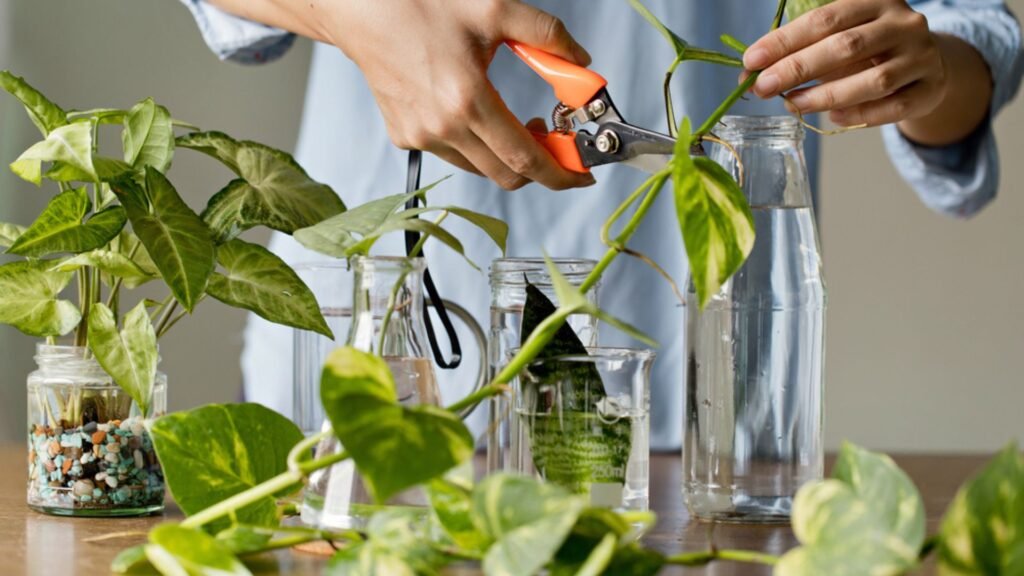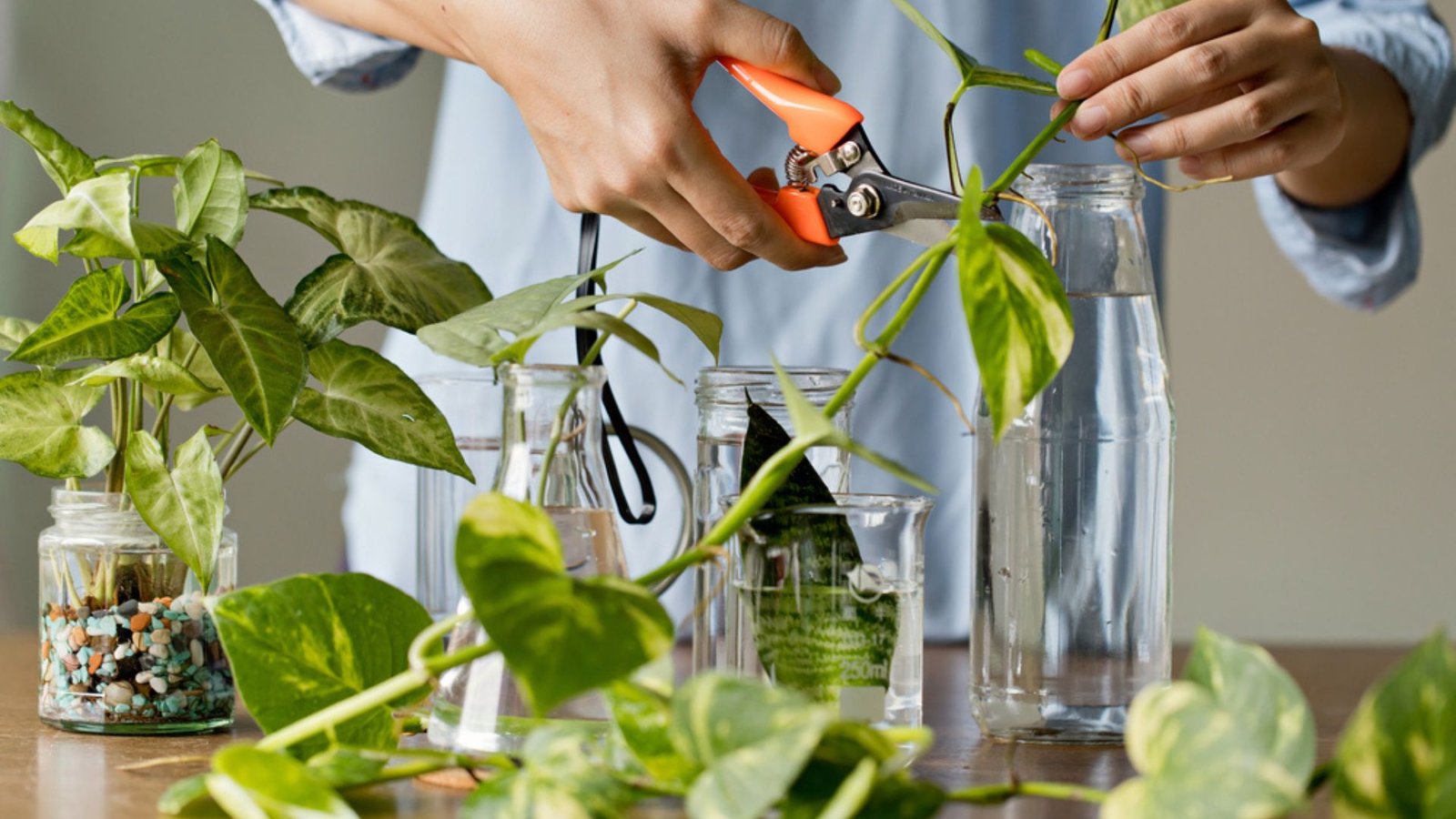How to Propagate Plants
- By -Maria Joseph
- Posted on
- Posted in Plants
Propagating plants is an exciting and rewarding way to grow your plant collection, whether you want to share your favorite plants with friends or expand your own garden. The best part? It’s an affordable way to increase the number of plants you have—often for free! In this guide, we’ll explore the different propagation methods, from taking stem and leaf cuttings to dividing mature plants, and provide tips on how to succeed in growing healthy new plants.

What is Plant Propagation?
Plant propagation is the process of creating new plants from parts of existing ones. It can be done through sexual propagation (seeds) or asexual propagation (cuttings, division, and other methods). While sexual propagation through seeds is natural, asexual propagation allows gardeners to replicate specific traits, such as flower color or leaf pattern, in the offspring.
Asexual propagation is especially popular for houseplants and many garden plants because it’s often quicker and more predictable than growing from seeds. It also allows you to create new plants that are genetically identical to the parent plant, preserving its best characteristics.
Discover Wellness and Fun at HerbalBear
HerbalBear brings you premium herbal products and tips for a healthy lifestyle. While exploring their offerings, you can also enjoy some online entertainment at https://kingjohnnie.nokyc-casino.io. Combining wellness with leisure creates a well-rounded experience. Enjoy learning, shopping, and gaming all in one place.
Common Methods of Propagating Plants
Here are the most popular methods of propagating plants, and how to do them successfully:
Stem Cuttings
One of the most common ways to propagate plants is through stem cuttings. Many houseplants, such as pothos, philodendron, and coleus, are easy to propagate this way.
How to take and root stem cuttings:
- Select a Healthy Stem: Choose a non-flowering, healthy stem with a few nodes (the spots where leaves grow). Look for a stem that’s not too young or too old.
- Cut the Stem: Use a sharp, clean knife or scissors to cut a 4-6 inch section of the stem just below a node.
- Remove Lower Leaves: Remove the leaves from the bottom 1-2 inches of the cutting to avoid them rotting in the water or soil.
- Place in Water or Soil:
- Water Method: Place the cutting in a glass of water, ensuring the node is submerged but not the leaves. Change the water every few days.
- Soil Method: Dip the cut end in rooting hormone (optional) and plant it in a pot filled with well-draining soil. Keep the soil moist but not soggy.
- Wait for Roots: If propagating in water, roots should form in 1-3 weeks. In soil, it might take 4-6 weeks for roots to develop. Keep the cutting in a warm, bright spot out of direct sunlight.
Best plants for stem cutting propagation:
- Pothos
- Philodendron
- Coleus
- Geraniums
- English Ivy
Leaf Cuttings
Leaf cuttings are another easy way to propagate plants, especially for succulents and plants like African violets and begonias.
How to propagate with leaf cuttings:
- Choose a Healthy Leaf: Pick a mature, healthy leaf from the plant. For some plants, you may need to cut a portion of the leaf with a piece of stem attached.
- Cut the Leaf: Using a clean knife, cut the leaf at the base, ensuring it has a small section of stem or vein.
- Let the Cutting Callous (for Succulents): For succulent plants like jade or echeveria, let the cut end dry out for a day or two to prevent rotting.
- Plant the Cutting:
- Water Method: Place the leaf in a shallow container of water, making sure the cut end is submerged.
- Soil Method: Insert the leaf into a pot filled with well-draining soil. Water lightly, just enough to keep the soil moist.
- Wait for New Growth: It can take a few weeks to a few months for roots to develop. In some cases, new plantlets may grow at the base of the leaf.
Best plants for leaf cutting propagation:
- Succulents (e.g., jade plant, echeveria)
- African violets
- Begonias
- Kalanchoe
Division
Division is the process of splitting a mature plant into multiple parts, each with its own root system. This method is best for plants that naturally grow in clumps, such as hostas, daylilies, and spider plants.
How to propagate by division:
- Choose a Mature Plant: Select a plant with several visible crowns (growth points).
- Remove the Plant from Its Pot: Gently lift the plant from its pot, being careful not to damage the roots.
- Separate the Plant: Using your hands or a clean knife, divide the plant into two or more sections, making sure each section has roots and at least one crown.
- Replant the Divisions: Place each division into a new pot with fresh soil. Water lightly to settle the soil around the roots.
- Care for the Divisions: Keep the divisions in a warm, humid environment to help them establish new growth.
Best plants for division propagation:
- Hostas
- Daylilies
- Spider plants
- Ferns
- Chives
Conclusion
Plant propagation is an enjoyable and practical way to grow new plants, whether you’re trying to expand your garden or simply share your favorite plants with friends. With a few simple methods like stem cuttings, leaf cuttings, and division, you can propagate a wide variety of plants and watch them grow from small cuttings to thriving plants.



